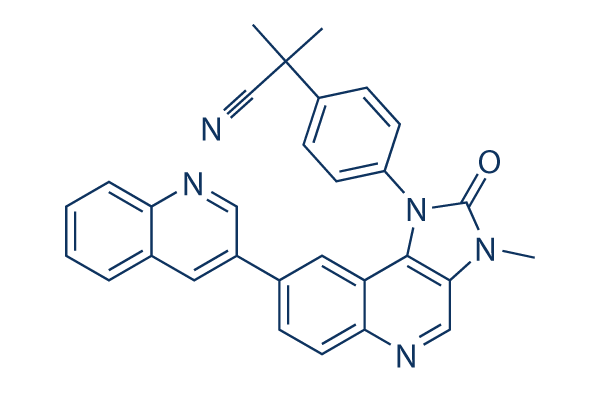p21 expression is highest in sufferers with poor prognosis irrespective of ER status. Though one can not rule out that elevated p21 amounts could also be located inside the stroma as opposed to the tumor cells themselves, these information show that high p21 expression correlates with bad clinical outcomes and propose that elevated p21 expression may perform a function in marketing tumor progression. Silencing p21 prevents breast tumor regional invasion in vivo and cancer cell migration and invasion in vitro To investigate the contribution of p21 to tumor formation and progression in breast cancer, we implemented a bone meta static cell line SCP2, a sub progeny of the human triple negative breast cancer MDA MB231 cells. We initially assessed the effect of suppres sing p21 on tumor development utilizing a mammary unwanted fat pad xeno graft mouse model. A particular p21 shRNA was stably transfected to produce a pool of p21 deficient SCP2 cells.
Knockdown of p21 making use of shRNA efficiently diminished p21 protein expression, as when compared with parental SCP2 cells. Parental and shRNA p21 SCP2 cells have been orthotopically injected to the experienced mammary extra fat pad of female Balb c nude mice. Tumor development was monitored weekly. There was no distinction while in the rate of principal tumor formation or tumor size amongst animals injected with parental or p21 deficient cells, suggesting p21 is not really probable concerned in tumor formation. Next, we evaluated the impact of p21 depletion on tumor invasiveness, a crucial phase for early tumor progression. Intact tumors have been taken with all the overlaying skin and surrounding deep tissues and analyzed by a pathologist. Tumor invasiveness was assessed by determining the extent of infiltration of cancer cells to your surrounding tissue, as previously described.
As proven in Figure 2C, tumors through the parental SCP2 group dis played no clear margin with the surrounding tissues and have been deeply invading into close by structures. In contrast, tumors derived from animals transplanted with p21 depleted SCP2 cells formed Cyclovirobuxine D a effectively encapsulated tumor mass that did not invade the surrounding tissues, strongly suggesting that p21 plays a significant function in tumor invasion. This was confirmed in vitro, as p21 gene silencing in SCP2 cells inhibited each cell migration and invasion. As proven in Figure S2A, none in the animals during which parental or p21 depleted SCP2 cells had been injected in to the mammary fat pad  formulated any bone lesions immediately after two months, the date at which mice needed to be sacrificed as a result of tumor dimension. This timing might have been inadequate for tumor cells to develop into visible distant lesions within the mouse. As a result, to investigate no matter if p21 is concerned within the later stage of breast cancer progression, we examined its involvement while in the advancement of bone osteolytic lesions working with an intratibia injection model of parental and p21 deficient SCP2 cells in female Balb c nude mice. By by passing the early actions of metastasis, this experi mental model lets for the evaluation of tumor cell metastasis and survival inside the bone marrow.
formulated any bone lesions immediately after two months, the date at which mice needed to be sacrificed as a result of tumor dimension. This timing might have been inadequate for tumor cells to develop into visible distant lesions within the mouse. As a result, to investigate no matter if p21 is concerned within the later stage of breast cancer progression, we examined its involvement while in the advancement of bone osteolytic lesions working with an intratibia injection model of parental and p21 deficient SCP2 cells in female Balb c nude mice. By by passing the early actions of metastasis, this experi mental model lets for the evaluation of tumor cell metastasis and survival inside the bone marrow.
CETP Signal
CETP is a member of a class of drugs
